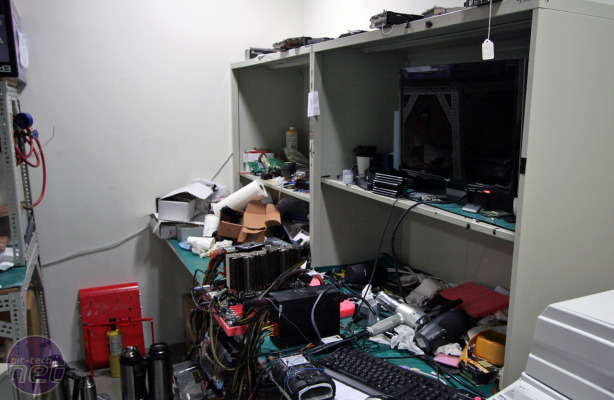
SR-2 Power and Jumpers
BT: How many PCB layers do you use?Shamino: Eight to ten. To be honest, I can't remember exactly.
BT: What power hardware do you use on the board?
Shamino: For the CPU we use Voltera 1185M, which is a digital solution.
BT: Why this choice versus the DrMOS style phases used on previous EVGA boards, or the DirectFET method Asus is now using on its ultra-high end Rampage III Extreme?
Shamino: For one thing the Voltera MOSFETs have a smaller package. We're limited by space despite increasing the board's size, so it's tough to place enough MOSFETs. The other reason is we've been using this on our Classified boards and people like it there, plus it's a proven solution for overclocking. Spec-wise it handles up to 50Amps per MOSFET, which is an assurance for us.
BT: Asus claims its DirectFET power method is 'better than digital' because it accesses all phases at the same time at a lower frequency. Asus claims this means that if a phase dies, the board can still be used, unlike the Voltera design.
Shamino: If a phase dies it's wired into a common 12V rail with all the other phases so that means there's no way one MOSFET can be shot and the rest continue to work as the whole plane is wired together to a single 8-pin connector. Unless they are talking about a driver IC, but in my experience almost every blown phase is due to a MOSFET failure, not a driver. This redundancy stuff is just marketing, that's my opinion.
People have this perception that if you place four inductors in a row then it means it's digital. Inductors aren't digital, they're just there to store current for when its needed. The only thing that's really digital is the controller IC because it can be adjusted via software, rather than by manually changing the circuit via resistance.
It's true the Voltera setup runs hotter and uses more power because of its higher frequency, but given the fact we're aiming the SR-2 at a dual Xeon, four-way SLI market for overclockers, power saving is not in our design brief.
BT: I hear you've got special jumpers built into the board...
Shamino: Ah, yes! The X-Cool jumper is for ultra-low temperatures, while the I-Limit jumper is just a strapping for the CPU. It actually totally disregards the TDP of the CPU - on a hardware level, not on a software level. We found totally ignoring it loses TurboBoost, which doesn't help some overclockers who want to try and use the extra multipliers, so it ends up not being used that much, but we wanted to include something for people to experiment with.

MSI MPG Velox 100R Chassis Review
October 14 2021 | 15:04









Want to comment? Please log in.